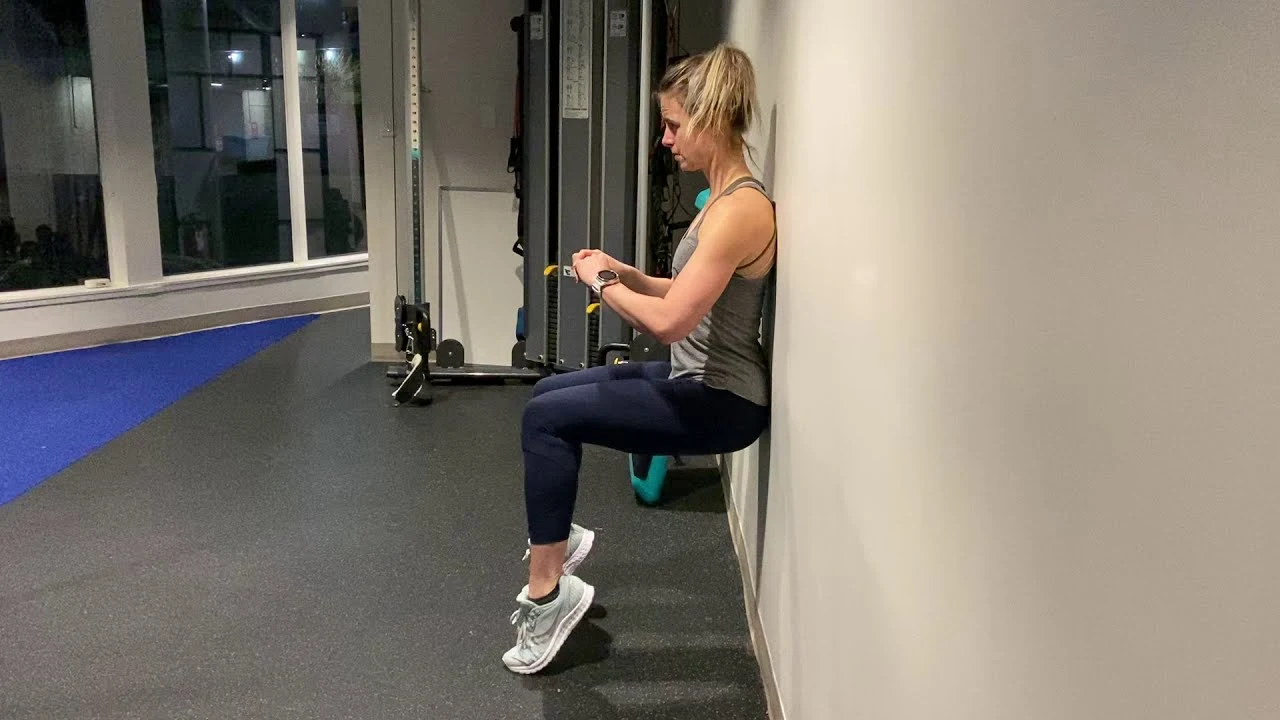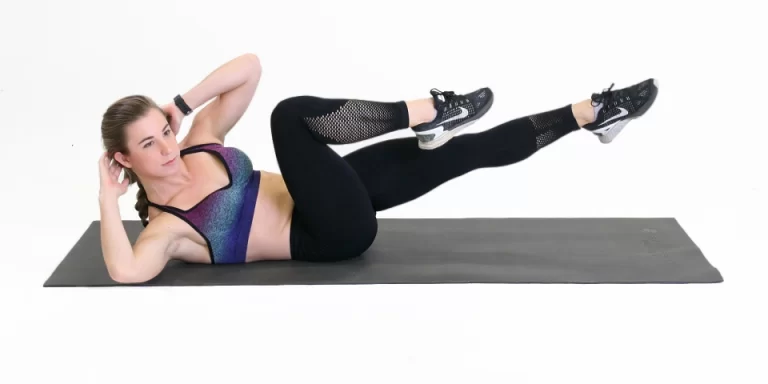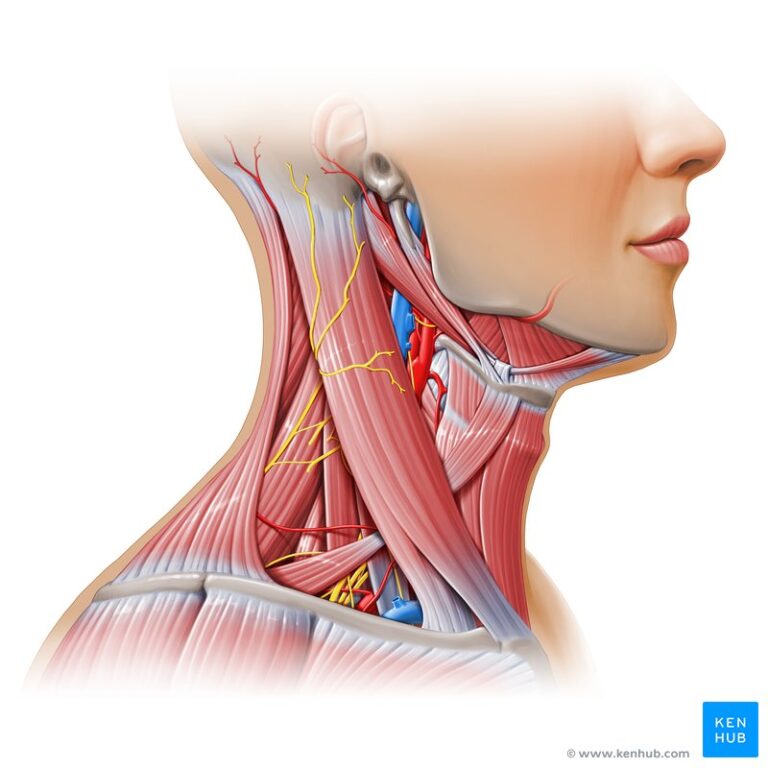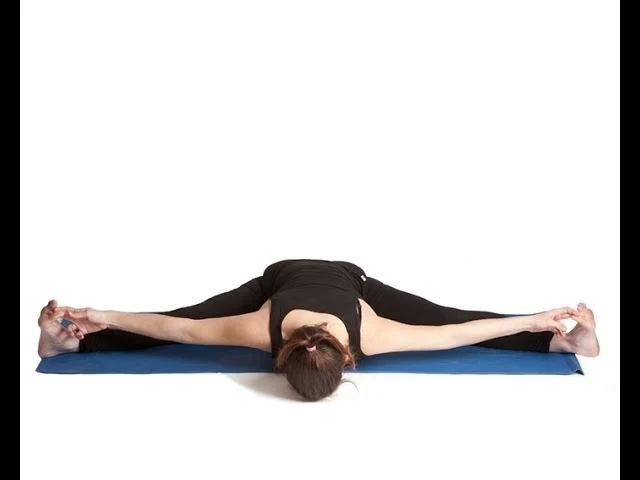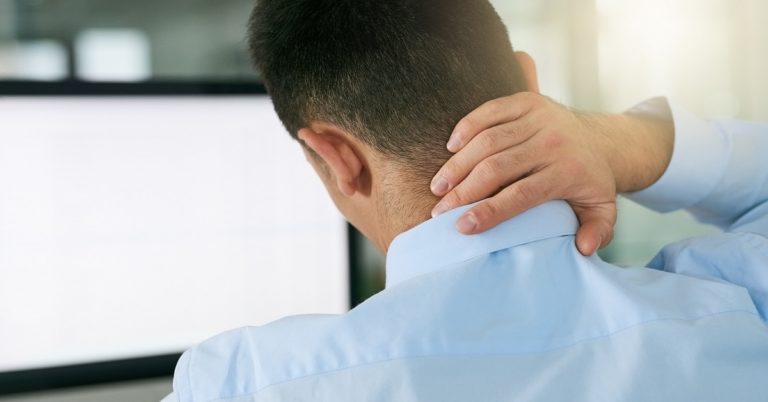Calf muscle strengthening exercise
Table of Contents
Introduction
- Calf muscle strengthening exercise is a great way to make the calf muscles more powerful that also helps you to level up your fitness and stamina. If a patient wants to strengthen the calf muscles that are located on the back side of the leg, this article is really informative for you.
- In this article, I will discuss the few best exercises the patient can easily do at home to make calf muscles powerful & strong as well as the health benefits of exercise.
What is calf muscle strengthening exercise?
- The calf is often overlooked in training, however, they are necessary muscles that control the motion of the ankle joints. The strong calf may prevent ankle injuries & assist with the motions that happen at the foot, such as rising onto the toes, rotating the feet inward as well as outward, or pulling the toes towards the knees. These motions allow a patient to jump, run, & walk.
- Since a calf is relied upon for the motions the patient does every day, they are susceptible to injuries & strain. Strong calves muscles can assist to rehabilitate existing injuries or prevent future damage to the lower limb.
- If a patient has mobility issues, improving the calf strength may benefit the patient as they support tendons, such as the Achilles.
- Individuals who suffer from knee pain or even plantar fasciitis may improve their symptoms by strengthening the calf as well. If a patient does have any pains or injuries, check with the doctor before doing this exercise.
- If the patient is an athlete, strong calves may improve performance, especially while explosive bursts of power & speed owing to the fast-twitch muscle fibers in the calf. If the patient participates in jumping or even fast-moving sports such as basketball, soccer, sprinting, or even cycling, this is wise to do specific calf-strengthening exercises.
- Along with other muscles in the legs, the calves muscles, composed of the gastrocnemius & soleus, provide joint stability at the ankle.
- The gastrocnemius is the more significant part of the calves muscle that creates the shape that the patient can see. It has 2 heads that form a diamond shape with a split in the middle that the patient may see if he develops the muscle or are lean. The small muscle that lies underneath the gastrocnemius is named the soleus.
- Many calves exercises strengthen both the gastrocnemius as well as the soleus, while others isolate any one of these. Several weighted & bodyweight exercises will strengthen the calves’ muscles, but some cardiovascular exercises particularly assist to strengthen the calf.
- Do not forget to warm up with mobility work & cool down at last by doing stretching after the workout.
Health benefits of calf strengthening exercise
- A strong calf can improve performance,
- Individuals who suffered knee pain or even plantar fasciitis can improve their symptoms by strengthening their calves.
- The entire lower body routine relies on the strength of the calf muscles.
- Runners, if the patient wants to improve the speed then do calves raises.
- Yes, calf raises mean a major no to injuries.
- Stronger & flexible calves’ muscles give you better balance and stability as well.
- Assists to reduce the risk of ankle & foot injuries.
- Better agility when jumping & running.
- More explosive, rapid motion Great exercise for runners Calves exercise may also detect an older person’s ability to do activities of daily living
- Assists to decrease stress on an Achilles tendon, this will give the lower leg to defined appearance.
- This exercise assists to stabilize the foot & ankle.
- The whole lower body performance depends on the calves’ muscle strength.
Here explained different strengthening exercises for the calf muscle
Seated Calf Raise
- How to do this strengthening exercise:
- For this exercise, a patient has to access the calf raise machine Another option would be holding something heavy on the lap, but this will not provide enough load to work the muscles properly.
- Since the knees are flexed, gastrocnemius is not working.
- A seated calf raises primarily target the soleus muscle(lower limb).
- For this exercise, a patient has to Sit on the machine with the upper thighs placed under a pad.
- The pad should rest just above the knees. The ball of feet should be positioned on a footplate.
- Now lower the heels as much as possible. Gradually elevate the heels while pushing the toes into the pad.
- the patient has to raise the heels until a patient feels a stretch in the calf and hold for two to three seconds before lowering down to the starting position.
- Do ten to fifteen repetitions in one session. Do three sessions in a day.

Standing Dumbbell or Barbell Calf Raise
- How to do this strengthening exercise:
- This exercise will target the gastrocnemius region of the calves.
- The patient can do this motion on the exercise step or with weight plates under the balls of the feet.
- The patient can use dumbbells or the barbell, & make sure he completes the motion gradually & with control.
- Stand on the weight plates, the arches of the foot, & the heels of the feet should be extended on the plate.
- If the patient performs this exercise with the barbell, put the barbell on the shoulder or with dumbbells then hold this in the hand by the side.
- The back should be flat & engage the core muscles while the heels are raised.
- Hold for a couple of seconds at the top motion, now lower down the heels but do not touch the ground. Do this for ten to fifteen repetitions in one set. Perform two sets in one session. Do three sessions in one day.

Barbell Split Squats
- How to do this strengthening exercise:
- This exercise will train the entire legs, but there is a significant focus on the calves.
- This exercise is an ideal choice for those who have limited time & wish to exercise their calf in combination with the rest of their leg muscles.
- Place desired weight on a barbell in the squat rack.
- Put the barbell across the shoulder on the trapezius muscles. Now lift a barbell off the rack & step back from the rack the core muscles should be braced. Step the right foot forward, leaving the left foot behind you.
- Lower the left knee towards the floor. Push through the front right foot, and raise the leg back up to standing.
- Keep yourself in the split position, & do not step the feet back together. Do this ten to twelve times per slide.
Leg press exercise
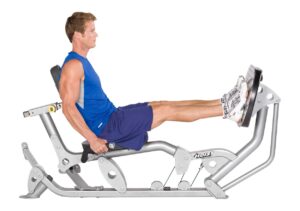
- How to do this strengthening exercise:
- Using this machine for calf raises is another option at a gym, especially if the patient does not have the seated calf raise machine or he is not comfortable using the barbell. The leg press machine supports the upper body so that the patient does not have to worry about losing balance.
- If a patient is suffering from a knee injury or even soreness, then he should avoid this leg press machine calf raise machine.
- For this exercise, the patient has to Sit on the leg press machine with the feet flat on the plate & shoulder-width apart.
- Push the plate away from the body using the balls of the foot until the legs are near to locked out but not completely.
- Move by the toes into the tiptoe position & hold for five to ten seconds before lowering back to flat feet.
- Do ten to fifteen repetitions in one session. Do nearly two sessions in one day.
Body weight Calf Raise

- How to do this strengthening exercise:
- This exercise is convenient to target the gastrocnemius that may be performed on the exercise step or the stairs or any stable, flat surface with an edge.
- The patient can even do this exercise on flat ground. The patient will likely want to have something nearby that he can hold for
- support.
- When a patient uses a body weight is difficult, to pull or even push on the support for assistance.
- To increase the difficulty, the patient can try performing this exercise on a single leg at a time.
- For this exercise, a patient has to Stand tall with the feet hip-width apart, & the core should be engaged, and the back should be in a neutral position.
- Stand near a wall or even a supporter for balance, or place the hands by the sides.
- With focus placed on the calf muscles, raise yourself onto the balls of the feet.
- Hold for a couple of seconds, feeling the contraction in the calf, before dropping the heels below parallel or back to the floor, if the patient is not using a step.
- Do ten to twenty repetitions in one session. Perform three sessions in one day.
Single-Leg Forward Leaning Calf Raise
- How to do this strengthening exercise:
- To advance the calves raise exercise, the patient can try performing the single-leg forward-angled calves raise. A patient can use any stable flat surface or the barbell in the rack adjusted to the preferred height.
- A lower surface will reduce the resistance. The patient can also try this with bilateral feet at once, which will make it easier.
- This exercise mostly targets the gastrocnemius but also incorporates the soleus muscle. For this exercise, the patient has to Stand facing a vertical surface or even racked bar.
- Hold a barbell with the overhand grip wider than the shoulder width.
- Step the feet back to angle the body forward, a body should be in a straight line with arms extended.
- The feet should point forward. Flexed the knee to lift the right leg behind you.
- Raise the heel of the standing leg by extending the ankle as much as possible by you. A body should travel in a straight line upward at an angle.
- Hold for two seconds & feel the contraction in the working calves. Gradually lower the heel back to the ground.
- Do ten to fifteen repetitions in one session before going to another leg. Do around three sessions in a day.

Jumping Calf Press
- How to do this strengthening exercise:
- Another excellent bodyweight exercise for the calf, the jumping calf press, is a plyometric exercise that will assist build strength.
- For this exercise the patient has to stand naturally with hands by the sides, core muscles should be engaged, and back should be straight.
- Explosively depress off the land with the balls of your feet to jump into the air. Gradually land on a ball of the feet.
- Focus on contraction & tension in the calves while not relying on the quadriceps to power the pump.
- Do ten to twenty repetitions in one session. Do three sessions ina day.
Wall Sit Calf Raise
- How to do this strengthening exercise:
- This exercise may be performed as an isometric exercise where the patient holds the contraction the entire time or even perform
- repetitions of calf raise.
- Holding the exercise will improve strength as well as muscular endurance.
- For this exercise, a patient has to stand with the back flat against a wall & the shoulder feet width apart two feet away from the wall.
- Engage the core muscles & slide the back down until the thighs are parallel to the floor.
- Keep the knees above the ankle, not on the toes. Lift the heels off the ground by pushing through the balls & toes of the feet.
- Hold this position for ten to twenty seconds or the patient can alternatively lower the heels back down.
- If the patient holds this motion then repeat for three times & rest for thirty seconds in between two repetitions in one session. Do three sessions in one day.
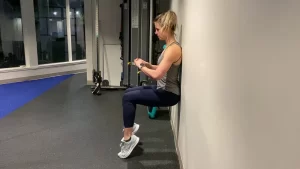
Carioca Agility Ladder Drill
- How to do this strengthening exercise:
- Agility ladder drills are an excellent functional fitness exercise that targets the whole body & the cardiovascular system.
- The calf will predominantly work with agility ladder drills as the patient does many of the moves with the balls of the feet as he quickly makes the way through the rungs of the ladder.
- The Carioca drill relies heavily on the calf’s muscles for quick, explosive, agile motions.
- Stand on the left side of the agility ladder & after that step sidewise with the lead foot into the nearest box. After that, cross the back foot behind the front foot into the second box.
- Continue switching the leg, stepping laterally across the ladder boxes, and rotating the hips as he moves.
- Try to do the smooth & controlled motion with fast feet. Repeat, moving back through the latter the contrasting way.
Jump Rope

- How to do this strengthening exercise:
- This is an excellent cardiovascular exercise, however, this also assists to build strength in the calf.
- As the patient repeatedly jumps from the balls of the feet, he will work the muscles of the calf, building strength, power, & muscular endurance.
- Grab a jump rope handle in both hands with the middle of the rope positioned back to you. Rope ends should be with the hips & hold out from the body.
- Rotate the wrists to swing the rope upward & over the head.
- While the rope moves down in front of you, jump over the rope with both feet, landing gradually on the balls of the feet.
- Continue the movement swinging the rope behind you & back over the head again.
Cycling exercise
- How to do this strengthening exercise:
- Whether indoors or even outdoors, cycling is a great way to train the calf muscles without lifting any weights.
- While weight training is essential for building muscle, cross-training with a cardiovascular activity such as cycling may also assist to increase the calves’ strength & muscular endurance.

Here explained some tips for making the most out of cycling for calf strength
- Adjust the seat on the cycle, so the patient can lean forward & maintain a flat back when reaching the Hand supporter. The abdominals as well as back muscles should be braced & core muscles are engaged while the patient leans forward.
- Take a warm-up by putting the cycle in the highest gear setting. Push a pedal in rotation by keeping tension in the calves while pushing down.
- After a few minutes change the gear to have more resistance & continue pushing by the leg muscles feelings the tension & contraction in the calf muscle.
Farmer’s Walk on Toes
- How to do this strengthening exercise:
- Grab heavy dumbbells in the hand by the sides.
- Rise on the toes as well as walk forward for 40-50 seconds.
- If the patient feels that he could have gone longer than 60 seconds, increase the weight. Do one to two sets in one day.
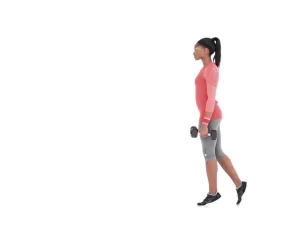
Plyometric Lunge
- How to do this strengthening exercise:
- Start standing then take a step forward with the left foot & drop into the lunge, lowering the right knee to touch the floor.
- Push through the left heel to explode into the jump & switch legs in mid-air so the patient lands in the lunge with the right leg forward.
- Use the arms for momentum. Repeat a lunge jump on the left leg.
- This is one repetition. Do ten to fifteen repetitions in one session. Perform three sessions in one day.
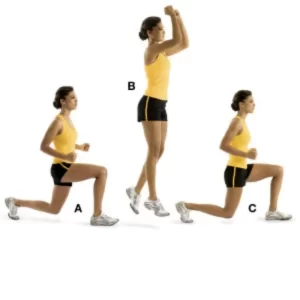
When did the patient not do this exercise?
- If the patient has any knee or even ankle injury then avoid these exercises.
- If a leg bone recently fractured.
- If the physical therapist provider advised the patient to take rest.
FAQ
Try some of the following foods for strengthening:
Lean proteins, such as chicken as well as fish, and Red meat with no growth hormones, such as grass-fed beef.
eggs, Full-fat dairy, namely whole milk as well as full-fat Greek yogurt, Fat-rich fruits, like avocados, nuts, such as almonds., and whole-grain bread.
Weak or even tight calves make a person more susceptible to a range of injuries, including shin splints. Maintaining good calf health by strengthening daily & stretching as well as foam rolling will assist to prevent injury.
But can be difficult to increase the size of the calf muscles. In fact, the fitness community considers calves to be the most stubborn muscle group in a body. The person already works the calves whenever he stands or walks. But if the person wants to make them bigger, the key is to challenge them even more.
Just make sure the person trains them twice & this workout is the first thing he does on those two days. Do not train them on back-to-back days of the course. Leave at least 72 hours in between so the muscles can rest. This workout plan should assist a person who sees calf growth after six weeks.
During calf size is somewhat genetically determined, a little creativity & daily training may go a long way. Pair every set of the gastrocnemius or even soleus raises with a set of tibialis anterior raises. Keep the repetitions of the standard raises fairly low & vary the foot position.

